Comparison of Alkaline AA and Lithium AA Batteries
Comparison of Alkaline AA and Lithium AA Batteries
Choosing the right battery for your electronic devices can significantly impact performance, longevity, and overall reliability. Two of the most commonly used types are Alkaline AA and Lithium AA batteries. Though similar in size, these battery types differ drastically in chemistry, cost, efficiency, and environmental impact. In this in-depth guide, we will compare Alkaline AA and Lithium AA batteries across various parameters to help you make an informed choice. Whether you're powering remote controls, cameras, toys, or emergency equipment, understanding your battery options is essential for optimal device function.
- Understanding AA Battery Technology
- Battery Performance in Different Devices
- Battery Lifespan and Shelf Life
- Environmental and Safety Impact of Battery Types
- Cost Efficiency of Alkaline vs Lithium AA Batteries
- Temperature Tolerance of Each Battery Type
- Weight and Portability Comparison
- Battery Leakage Risk and Durability
- Best Use Cases for Each Battery Type
- Rechargeable Alternatives Are They Better
- How to Choose the Right AA Battery for Your Needs
- Summary of Key Differences
Understanding AA Battery Technology
Before diving into the comparison, it’s important to understand how each battery type works on a chemical and functional level.
What Are Alkaline AA Batteries?
Alkaline batteries are the most commonly used disposable battery type. They contain zinc and manganese dioxide as the main components of their electrochemical reaction. The electrolyte is usually potassium hydroxide, which is why they are termed "alkaline."
Key Characteristics:
- Nominal voltage: 1.5V
- Capacity: ~1800–2700 mAh (varies by brand and usage)
- Shelf life: 5–10 years
- Inexpensive and widely available
What Are Lithium AA Batteries?
Lithium AA batteries use lithium metal or lithium compounds as the anode, and they are designed to offer high performance for longer durations, especially in high-drain devices.
Key Characteristics:
- Nominal voltage: 1.5V (sometimes 1.8V for certain models)
- Capacity: ~3000–3500 mAh
- Shelf life: Up to 20 years
- Lightweight and highly durable in extreme temperatures
>>See also How to Start a Prius When the 12 Volt Battery Is Dead
Battery Performance in Different Devices
Performance varies drastically depending on the type of battery and the device in which it's used.
In Low-Drain Devices
For devices like remote controls, clocks, or simple flashlights, Alkaline AA batteries perform reasonably well. These devices don’t require a constant high current, allowing alkaline chemistry to function efficiently.
Pros:
- Cost-effective
- Sufficient energy for long-term, low-drain usage
Cons:
- Voltage drops quickly under moderate loads
In High-Drain Devices
Digital cameras, GPS devices, and handheld gaming systems are high-drain devices. Lithium AA batteries shine in this category.
Pros:
- Consistent power output
- Longer runtime
- Handles surges without significant voltage drops
Cons:
- More expensive
Real-World Test Scenarios
In tests using digital cameras with LCD screens:
- Alkaline batteries lasted around 100–150 shots.
- Lithium AA batteries delivered up to 600 shots.
That stark difference illustrates why battery choice is crucial for performance.
Battery Lifespan and Shelf Life
Battery longevity impacts not just how often you change batteries, but also storage and emergency readiness.
Shelf Life Comparison
- Alkaline Batteries: Typically last between 5 to 10 years if stored properly.
- Lithium Batteries: Can last up to 20 years in storage.
This makes lithium the better option for emergency kits and backup supplies.
Usage Life
Battery longevity in use also varies:
- In a wall clock, an alkaline battery may last 12–18 months.
- A lithium battery could power the same device for up to 3 years.
Environmental and Safety Impact of Battery Types
Environmental safety is increasingly important when choosing battery products.
Alkaline Battery Environmental Impact
While considered less toxic than older battery chemistries (like nickel-cadmium), alkaline batteries still contribute significantly to landfill waste. They are non-rechargeable and not designed for recycling, although many regions now offer recycling programs.
Lithium Battery Environmental Impact
Lithium AA batteries are more energy-dense, which means fewer batteries are used over time. However, their disposal needs to be managed more carefully due to the reactive nature of lithium.
Battery fires can occur if lithium batteries are punctured, overheated, or exposed to moisture. They must be disposed of at certified recycling centers.
Cost Efficiency of Alkaline vs Lithium AA Batteries
Upfront Cost
- Alkaline AA batteries: ~$0.50 to $1 per unit
- Lithium AA batteries: ~$1.50 to $3 per unit
While alkaline batteries are more affordable initially, the cost per hour of use is often lower with lithium due to their extended performance.
Long-Term Cost Efficiency
In high-drain applications, lithium batteries may cost less over time because they don’t need to be replaced as often. This makes them a more cost-effective battery solution for intensive use.
Temperature Tolerance of Each Battery Type
Temperature performance matters for outdoor activities, industrial use, or storage in variable conditions.
Alkaline Battery Performance
- Optimal temperature: 20–25°C
- Can fail in subzero or high-heat conditions
- Prone to leakage over time
Lithium Battery Performance
- Functions from -40°C to +60°C
- Perfect for winter expeditions, high-altitude hiking, or emergency weather radios
- Minimal leakage risk
Lithium batteries provide more dependable power regardless of the climate, making them a superior battery option in harsh environments.
Weight and Portability Comparison
When it comes to weight, lithium has a noticeable advantage.
- Alkaline AA battery: ~23 grams
- Lithium AA battery: ~15 grams
While an 8-gram difference might seem minor, in gear-intensive scenarios like photography or hiking, this can add up quickly. Professionals and backpackers often favor lithium for this reason.
Battery Leakage Risk and Durability
Alkaline Batteries
Over time, especially after complete discharge, alkaline batteries are prone to leaking potassium hydroxide, a corrosive substance that can damage electronics.
Lithium Batteries
Lithium batteries are engineered to be leak-resistant, even in long-term storage or high-drain usage. This makes them the preferred battery for expensive electronics.
Best Use Cases for Each Battery Type
Understanding the right use case can prevent underperformance or wasted money.
Best Uses for Alkaline AA Batteries:
- Remote controls
- Wall clocks
- Children’s toys
- Flashlights for occasional use
Best Uses for Lithium AA Batteries:
- Digital cameras
- Emergency flashlights
- Medical devices
- High-performance equipment in extreme environments
The decision should be based on how critical the battery performance is in your device.
Rechargeable Alternatives: Are They Better?
While this article focuses on disposable batteries, it's worth mentioning rechargeables.
NiMH Rechargeable Batteries
Nickel-metal hydride (NiMH) batteries can be recharged up to 1000 times. Though their capacity (~2000–2500 mAh) is lower than lithium disposables, they’re great for environmentally conscious users.
When Rechargeables Make Sense:
- High-frequency use
- Devices that are recharged regularly (like game controllers)
- Reducing landfill waste
Still, in terms of reliability and storage life, lithium AA batteries often outperform rechargeable options when immediate readiness is needed.
>>See also Can I Use a 12V Solar Panel to Charge a 48V Battery
How to Choose the Right AA Battery for Your Needs
When choosing between alkaline and lithium AA batteries, ask the following:
- Is the device high-drain or low-drain?
- Will it be used in extreme temperatures?
- Is battery leakage a concern?
- Do you need long-term storage or backup?
Based on these questions, you can select the battery that aligns with your needs for performance, budget, and safety.
Summary of Key Differences
|
Feature |
Alkaline AA Battery |
Lithium AA Battery |
|
Voltage |
1.5V |
1.5V–1.8V |
|
Capacity |
1800–2700 mAh |
3000–3500 mAh |
|
Shelf Life |
5–10 years |
Up to 20 years |
|
Cost |
Lower |
Higher |
|
Weight |
Heavier (~23g) |
Lighter (~15g) |
|
Temp Tolerance |
0°C to 55°C |
-40°C to +60°C |
|
Leakage Risk |
Moderate |
Very Low |
|
Best For |
Low-drain devices |
High-drain or critical-use |
In conclusion, the right battery for your device largely depends on usage context. Alkaline AA batteries are perfect for everyday items with minimal energy needs, offering a budget-friendly solution. On the other hand, lithium AA batteries are ideal for high-performance, high-drain, or emergency scenarios. They last longer, perform better under stress, and offer excellent shelf life.
For best results, match your battery choice to the device’s demand and your usage patterns. Being informed means saving money, protecting your devices, and reducing your environmental footprint.

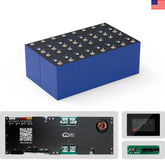



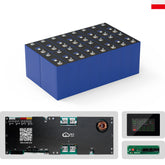

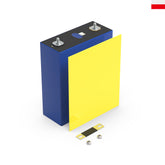

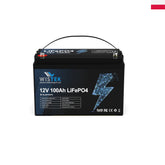
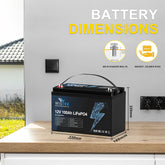


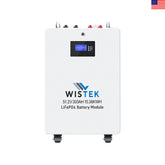
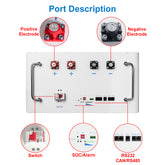
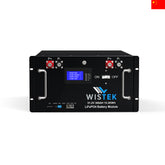
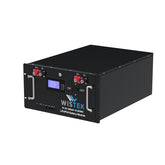


Leave a comment
All blog comments are checked prior to publishing